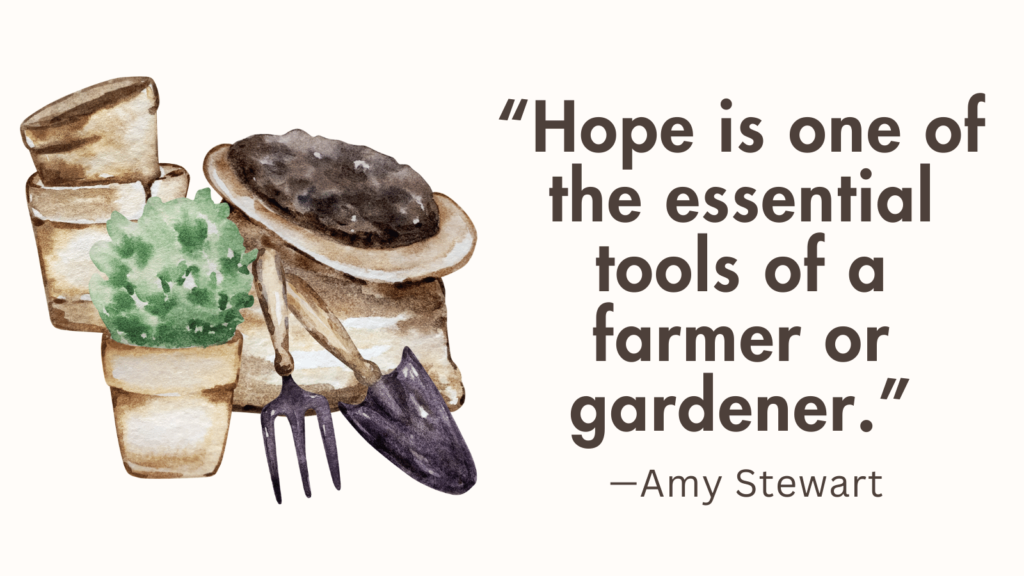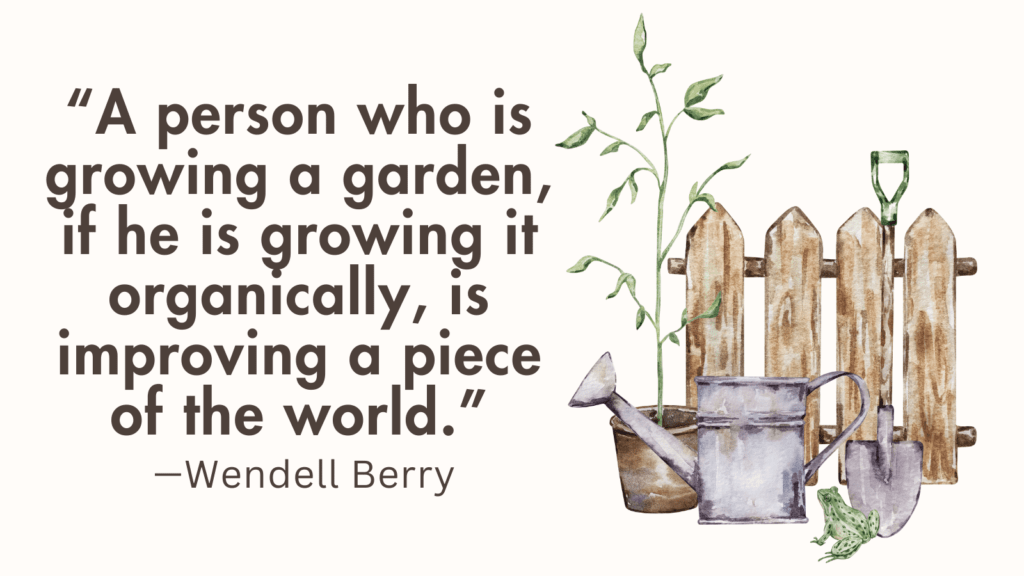In this post, you’re going to learn how long does grass seed last.
What Is Grass Seed?
Grass seed refers to the seeds of various grass species that are used for establishing or repairing lawns, pastures, or other grassy areas.
Each grass species has different characteristics, such as drought tolerance, shade tolerance, or foot traffic resistance.
Grass seed is a key component in establishing and maintaining a healthy lawn.
However, like any other type of seed, grass seed does have a shelf life.
Grass seed is the reproductive structure of grass plants and contains the genetic material necessary for new grass growth.
The viability of grass seed refers to its ability to germinate and produce healthy new grass plants.
The shelf life of grass seed can vary depending on various factors, including the type of grass seed, storage conditions, and initial quality of the seed.
Related: Garden Tool Box [Complete Guide + Resources]
How Long Does Grass Seed Last?
The shelf life of grass seed refers to its ability to remain viable and germinate successfully.
On average, most grass seeds have a shelf life of 2 to 3 years.
However, it’s essential to keep in mind that this is a general guideline, and the actual viability of grass seed can differ.
Some grass seed varieties may remain viable for up to 4 or 5 years, while others may lose viability after just one year.
The packaging of grass seed typically includes a “sell-by” or “packed for” date.
This date provides an estimate of how long the seed can be stored before it starts to lose viability.
It is crucial to check the packaging for this information when purchasing grass seed to ensure you are starting with the freshest product possible.
Related: How To Put Slate In A Garden?
Factors Influencing the Shelf Life of Grass Seed
Several factors can influence the longevity of grass seed, including seed type, initial quality, storage conditions, and seed dormancy.
By understanding these factors, you can better preserve the viability of your grass seed and ensure successful lawn establishment.
1. Seed Type
Different grass species and varieties have varying levels of seed longevity. Some grass seeds have shorter shelf lives compared to others.
It’s essential to research the specific grass species you intend to plant and understand its expected seed longevity.
Here are a few examples:
– Perennial Ryegrass (Lolium perenne): Perennial ryegrass seeds generally last from 2 to 4 years. Beyond this timeframe, the germination rates may decline, making it less suitable for planting.
– Tall Fescue (Festuca arundinacea): Tall fescue seeds generally have a longer shelf life, ranging from 3 to 4 years or even up to 5 years under optimal storage conditions. This grass species is known for its adaptability and durability.
– Bermuda Grass (Cynodon dactylon): Bermuda grass seeds typically have a moderate shelf life of 2 to 3 years. However, some improved varieties may maintain viability for up to 4 years.
2. Initial Seed Quality
The quality of the grass seed at the time of purchase plays a crucial role in its longevity.
High-quality grass seeds have a higher chance of remaining viable for longer periods.
When buying grass seed, it’s important to choose reputable suppliers that provide fresh, high-quality seed. Look for packaging that includes information on the seed’s “packed for” or “sell-by” date.
Fresher seed will have a longer shelf life and better germination rates compared to older stock.
Related: Why Do You Plant Rosemary By Your Garden Gate?
3. Storage Conditions
Proper storage conditions are vital for preserving the viability of grass seed.
Exposure to moisture, extreme temperatures, and sunlight can accelerate the deterioration of seed.
4. Seed Dormancy
Seed dormancy is a built-in mechanism that delays germination until certain environmental conditions are met.
While dormancy can help protect the seed’s viability, it can also contribute to a shorter overall shelf life.
Breaking seed dormancy can improve germination rates and extend the effective lifespan of the seed.
Here are some methods to break seed dormancy:
– Scarification: Mechanical scarification involves scratching or nicking the seed coat to facilitate water absorption and promote germination. This can be done manually using sandpaper or by soaking the seed in warm water for a specified time.
– Stratification: This method mimics nature’s process of exposing seeds to cold temperatures over winter. Stratification can help break seed dormancy in certain grass species. Place the grass seed in a sealed plastic bag with a moistened paper towel and refrigerate it at approximately 40°F (4°C) for a recommended period. Once stratification is complete, plant the seed according to the species’ germination requirements.
– Pre-soaking: Soaking grass seed in water for a specific duration before planting can also help break dormancy. This method provides moisture and initiates the germination process.
Related: Do Rabbits Eat Mint In The Garden?
Signs of Expired Grass Seed
Determining if grass seed has expired or gone bad is crucial to ensure successful germination and establish a healthy lawn.
While grass seed generally has a shelf life, its viability can diminish over time, especially if it’s stored improperly or past its expiration date.
By recognizing the signs of expired grass seed, you can avoid wasting time, effort, and resources planting seeds that are unlikely to grow.
Here are some indicators that your grass seed may have expired:
1. Inadequate Germination Rates
One of the most apparent signs of expired grass seed is poor germination rates or a complete lack of germination.
If you notice that very few or no seeds are sprouting within the usual germination timeframe specified for the grass species you planted, it may indicate expired or low-viability seed.
Conduct a germination test by planting a small sample of the suspected expired seed in a controlled environment, such as a container with suitable soil, water, and light conditions.
If the germination rate is significantly below the expected percentage, it suggests that the seed has expired.
2. Visible Mold or Fungal Growth
Expired grass seed may develop visible mold or fungal growth, indicating moisture damage or contamination.
If you notice fuzzy patches, discoloration, or an unpleasant odor on the seeds or in the storage container, it is likely that moisture has affected the seed’s viability.
Mold or fungi can prevent proper germination and compromise the health of the emerging seedlings.
It’s essential to discard any grass seed showing these signs to prevent the spread of disease or detrimental growing conditions.
Related: How To Build A Garden Window?
3. Discoloration and Unhealthy Appearance
Inspect the grass seed for any notable changes in color or appearance.
Expired seed may appear discolored, faded, or dull compared to fresh seed.
The healthy green or brown hue of viable grass seed may become pale, yellowish, or even gray when it has reached its expiration date or experienced deterioration.
Additionally, expired seeds might lose their typical firmness and become soft, brittle, or crumbly to the touch.
These physical changes suggest that the seed’s internal structures have deteriorated, making it less likely to germinate successfully.
4. Pest Infestation
Expired grass seed can attract and harbor pests, including insects or rodents.
If you observe signs of infestation such as chewed or damaged seeds, webbing, feces, or pest activity in the storage area, it could indicate that the seed has become a breeding ground or food source for pests.
Pests can damage or consume the seeds, compromising their viability and reducing the chances of successful germination.
To avoid spreading pests to your lawn, it’s crucial to discard any contaminated or infested seed and take measures to prevent future infestations.
Related: Best 5 Plants for the Windowsill
5. Exceeded Expiration Date
Most commercially packaged grass seed includes an expiration or “packed for” date printed on the label.
It is important to check this date before using the seed.
If the expiration date has passed, it does not guarantee that the seed is no longer viable, but it does indicate that its germination rates may have declined.
Fresher seed generally has higher viability and is more likely to germinate successfully.
If you’re unsure about the viability of expired seed, performing a germination test can help determine if it’s still usable.
6. Inconsistent Seed Characteristics
Grass seed that has expired or been improperly stored may exhibit inconsistencies in seed characteristics.
This includes size variations, irregular shapes, or damaged seed coats.
Viable grass seed typically has consistent size, shape, and a smooth, intact seed coat.
In contrast, expired seed may show signs of physical damage, such as cracks, splits, or broken seed coats.
These damaged seeds are less likely to germinate or produce healthy seedlings.
Related: When Is the Worst Time to Water Plants?
7. Lack of Vigor and Slow Growth
Even if some expired grass seed manages to germinate, the resulting seedlings may display weak vigor and slow growth compared to those grown from fresh seed.
The seedlings may appear stunted, with thin or sparse blades, indicating insufficient nutrients and energy reserves.
Weak seedlings are more susceptible to diseases, pests, and environmental stressors.
Planting expired grass seed can lead to an underperforming lawn with patchy coverage and slow establishment.
Remember, environmental and storage conditions greatly influence the shelf life of grass seed.
Even if properly stored, certain grass species naturally have shorter seed longevity compared to others.
It is ideal to use fresh, high-quality seed and store it correctly to maximize germination rates and achieve the best results when establishing your lawn
Related: Does Clover Grow In Shade?
How to Extend the Lifespan of Grass Seed?
Extending the lifespan of grass seed is crucial to ensure its viability and successful germination.
By taking proper precautions and providing the right storage conditions, you can preserve the quality of your grass seed for longer periods.
Here are some tips to help extend the lifespan of your grass seed:
1. Purchase Fresh Seed
Start with high-quality grass seed that is fresh and within its expiration date.
When buying grass seed, check the packaging date or “packed for” date to ensure you’re getting the freshest seed available.
2. Store in a Cool, Dry Place
Proper storage conditions are essential to maintain the viability of grass seed.
Keep the seed in a cool, dry place away from direct sunlight and moisture.
Excessive heat, humidity, and exposure to light can lead to premature deterioration.
Related: White Lavender – Everything You Need to Know
3. Use Airtight Containers
Transfer the grass seed from its original packaging into airtight containers to prevent exposure to air and moisture.
Mason jars, sealable plastic bags, or plastic storage containers with tight-fitting lids work well for this purpose.
Ensure that the containers are clean and dry before transferring the seed.
4. Control Temperature and Humidity
Aim to store the grass seed in an environment where temperature and humidity levels are stable.
Ideally, temperature should be around 50-70°F (10-21°C), and humidity should be below 50%.
Avoid storing the seed in garages, sheds, or areas prone to extreme temperature fluctuations.
Related: The 7 Garlic Growing Stages
5. Avoid Freezing and Thawing
Grass seed can be sensitive to freezing and thawing cycles, which can damage its viability.
If you live in an area with cold winters, make sure to store the seed indoors where it won’t be exposed to freezing temperatures.
6. Protect from Pests
Keep the stored seed away from pests such as insects and rodents, as they can damage or consume the seed.
Ensure that the storage containers are tightly sealed to prevent any pest infestation.
If needed, use pest control measures to protect your seed.
7. Rotate Stock
If you have multiple batches of grass seed, use the older seed first before opening the fresher ones.
This helps ensure that no seed remains unused beyond its expiration date.
Related: How to Grow Winter Peas?
8. Perform Germination Tests
If you’re unsure about the viability of your stored grass seed, perform a germination test before planting.
Place a sample of the seed on a damp paper towel or in a container of moist soil and monitor it for germination.
This will give you an idea of the seed’s viability and the expected germination rate.
9. Avoid Excessive Handling
Minimize unnecessary handling and shaking of the seed containers, as this can cause physical damage to the seeds.
Treat the containers with care to prevent crushing or breaking the seed coats.
By following these guidelines, you can prolong the shelf life of your grass seed and maximize its germination potential.
Remember to regularly inspect and replace any seed that shows signs of deterioration, such as mold, discoloration, or poor germination rates. Using fresh, high-quality seed will increase the chances of establishing a healthy and vibrant lawn.
Related: How to Protect Your Watermelon Farm?
FAQs
How does grass seed germinate?
Grass seed germination occurs when the seed absorbs water, triggering biochemical processes that lead to the growth of a new plant.
Adequate moisture, proper temperature, and favorable soil conditions are crucial for successful germination.
How long does it take for grass seed to germinate?
The time taken for grass seed to germinate can vary depending on various factors such as grass species, temperature, moisture, and soil conditions.
On average, most grass species take anywhere between 7 to 21 days to germinate.
When is the best time to plant grass seed?
The ideal time to plant grass seed depends on the grass species and climate.
Generally, the best time is during the spring or fall when temperatures are moderate, and moisture levels are favorable for seed germination.
It’s important to consider your specific region and consult local experts for precise recommendations.
Related: How To Grow Sustainable Food?
How much grass seed should I use?
The amount of grass seed required depends on the square footage of the area being seeded and the recommended seeding rate per square foot for the particular grass species.
It’s essential to follow the instructions provided on the seed package or consult with professionals to determine the appropriate amount for your project.
How often should I water newly planted grass seed?
Watering newly planted grass seed is critical for successful germination and establishment.
It’s generally recommended to keep the seeded area consistently moist but not overly saturated.
Light, frequent irrigation is usually necessary to prevent the seed from drying out.
Can I mix different types of grass seed together?
Mixing different types of grass seed can be done to achieve a specific desired result, such as improving the overall lawn quality or increasing shade tolerance.
However, it’s important to ensure that the selected grass species have similar growth habits, maintenance requirements, and environmental preferences.
Should I fertilize grass seed when planting?
While fertilization can provide essential nutrients for grass growth, it’s crucial to avoid applying fertilizer directly to newly planted grass seed.
Fertilizers can burn or damage tender seedlings.
Instead, it’s recommended to prepare the soil before planting with a balanced, slow-release fertilizer and then apply fertilizer after the new grass has established itself.
Related: Does Contour Farming Work Everywhere?
How often should I mow newly established grass?
Newly established grass should be mowed for the first time when it reaches a height of about 3 inches.
Ensure that the mower blades are sharp, and only cut off a maximum of one-third of the grass height at a time.
Regular mowing is necessary to maintain the desired height and encourage lateral growth.
How long does it take for a new lawn to become fully established?
The time required for a new lawn to become fully established depends on several factors, including grass species, climate, soil conditions, and maintenance practices.
On average, it may take anywhere from several months up to a year for a new lawn to become fully established and reach its optimal appearance and functionality.
Related: What’s The Difference Between A Farm And A Ranch?
How can I prevent weeds from overtaking my grass seed?
To prevent weed competition, it’s essential to maintain proper lawn care practices.
This includes regular mowing, proper watering, and timely fertilization.
Additionally, using pre-emergent herbicides before weed seeds germinate can provide effective weed control.
What is overseeding, and when should it be done?
Overseeding is the process of spreading grass seed over an existing lawn to fill in bare spots, improve density, or introduce new grass varieties.
It can be done in the fall or spring, depending on the grass species and your specific circumstances.
Overseeding helps rejuvenate lawns, improve resilience, and maintain overall lawn health.
How can I test the quality of grass seed before planting?
You can perform a simple germination test to assess the quality of grass seed.
Place several seeds on a damp paper towel, fold it, and place it in a sealed plastic bag.
Keep it in a warm and bright area, and check after a few days to see how many seeds have germinated.
A high germination rate indicates good seed quality.
Related: How To Start Farming With No Money?

Garden Cart
*As an Amazon Associate I earn from qualifying purchases, at zero cost to you, if you click through the link and finalize a purchase.





